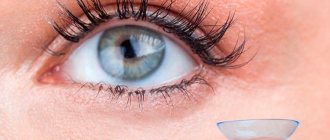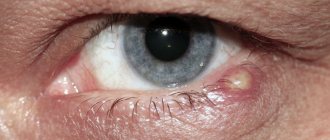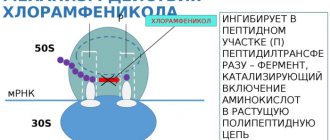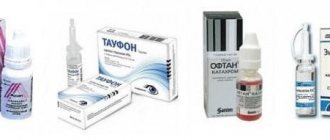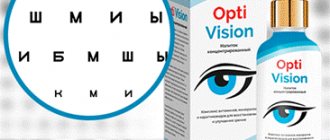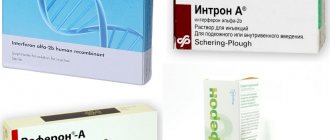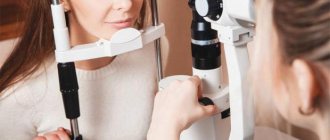The instructions for yellow mercury ointment indicate that its use is recommended for the treatment of eye and skin diseases. The external drug has a pronounced antiseptic effect and helps eliminate inflammation. Its use may cause side effects, so before using the ointment, consult a specialist.
Mercury yellow ointment - composition and release form
The active component is mercury oxide, which has a detrimental effect on pathogenic microorganisms that are the source of the inflammatory process. When applied to the skin, it has a drying effect.
The drug contains the following auxiliary components that have a softening and moisturizing effect, which helps reduce the risk of dry skin:
- lanolin;
- Vaseline oil.
Some manufacturers add a small amount of glycerin and purified water.
The product is a homogeneous, creamy mass. It can be light or bright yellow. It is packaged in aluminum tubes of different volumes, which are then placed in a cardboard box and the manufacturer’s data and expiration dates are indicated on it. You can buy yellow mercury ointment at a pharmacy without a prescription.
The product should be stored in a dark place, for a maximum of 5 years, if the seal of the tube is not broken. After the expiration date, it is strictly prohibited to use the drug for treatment.
Instructions for use of yellow mercury ointment
Depending on the type of disease, the following methods of using the drug are recommended:
- dermatological pathologies - a thin layer of the product is applied to the skin in the affected area 2 p. per day, without rubbing;
- eye diseases – 2 r. per day is placed under the lower eyelid.
The duration of the treatment course is determined individually by the attending physician (dermatologist or ophthalmologist) and can be 5-12 days. Using the ointment for longer than the permitted period will result in side effects.
When applying the drug, it is necessary to avoid contact with the mucous membranes of the nose and mouth, as this will lead to the penetration of mercury into the digestive system and will cause serious poisoning and damage to the gastrointestinal tract.
Due to rapid absorption, the appearance of greasy marks on clothing fabrics is eliminated.
The product must be kept away from children and when using it, make sure that particles do not remain within the child’s reach (floor, clothing). The ointment is excreted within 24 hours in the urine, so the patient is not at risk of its accumulation in the tissues. The positive effect of the treatment is noticeable after the first application.
Indications and contraindications
Treatment with yellow mercury ointment is prescribed when the following pathologies are detected:
- furunculosis;
- streptococcal impetigo;
- demodicosis;
- frequent occurrence of acne on the skin;
- dermatitis;
- skin diseases accompanied by the appearance of ulcers;
- chalazion;
- blepharitis;
- keratitis;
- conjunctivitis;
- inflammation of the mucous membrane of the eye.
There is also a list of contraindications:
- individual intolerance or hypersensitivity to the components of the drug;
- predisposition to allergies;
- eczema;
- tuberculosis;
- neuropsychiatric disorders;
- diseases of the kidneys, liver and gastrointestinal tract;
- age up to 12 years;
- breast-feeding. The substances that make up the ointment penetrate into the milk and cause nervous system disorders in the baby;
- pregnancy.
You should not make a choice in favor of this drug on your own, as it has a number of side effects.
Should I drink some mercury?..
Did you break your thermometer and are worried whether you did any harm to your body while collecting balls of mercury that rolled across the floor? Until the mid-twentieth century, people did not have such concerns. Moreover, mercury was perceived as a healing agent. It was with it, for example, that it was used to treat syphilis.
The first mention of such “therapy” dates back to the 16th century: the famous German physician Paracelsus tried to fight the “French disease” by rubbing mercury ointment into the patient’s legs. Later, doctors suggested that patients swallow mercury, make injections with it, breathe it, wear a bag of evaporating liquid metal around their necks...
It helped a lot of people. It has now been proven that mercury can suppress the causative agent of syphilis - Treponema pallidum. But, alas, the positive effect did not last long. Up to 80% of patients soon died, not from syphilis, but from severe poisoning, because mercury, accumulating in the body, has an extremely negative effect on the nervous and cardiovascular system, leads to disruption of protein metabolism, and causes breathing problems...
How did it all end?
The advent of antibiotics, which greatly simplified the treatment of syphilis. After this, the use of mercury began to decline and almost disappeared as unnecessary. However, it was still practiced for some time. In the Soviet Union, for example, drugs based on this metal were included in clinical recommendations until 1963. And even longer – until the early 70s – laxatives and diuretics based on mercury salts were used in medical practice.
Article on the topic
Martyrs of science. How doctors inoculated themselves with diseases Nowadays, this metal has practically been forced out of medicine. It remains only in thermometers, and even those in our country may be banned in the very near future.
Can it be used by children and pregnant women?
The use of yellow mercury ointment in the treatment of pregnant women and children under 12 years of age is highly undesirable. Children's skin is still very delicate and highly sensitive, which can lead to allergic reactions.
The use of drugs containing mercury during pregnancy is prohibited due to its toxic effects on the body. This will negatively affect the condition of the fetus, causing the development of congenital diseases.
Especially the ointment should not be used in the first trimester, when the formation of the child’s organs and systems occurs.
The drug is allowed to be prescribed only in cases of urgent need, when the positive effect of its use exceeds the strength of the negative impact on the body of the mother and fetus. In this case, the ointment can be applied in a small amount, only 1 r. per day, constantly monitoring the patient's condition. If it worsens and adverse reactions occur, then it is necessary to suspend such treatment.
Are you coughing?
One of the most dangerous drugs, the spread of which, perhaps, all civilized countries of the world are now fighting... In 1874, when heroin was synthesized, no one predicted such a fate for it.
However, it was not called heroin then, but was designated by the name of the chemical substance - diacetylmorphine. The drug received its “heroic” trade name when in 1898 one of the European companies began producing it as a cough medicine. It was believed that it perfectly calms and brings significant relief to patients. Heroin was also prescribed for heart complaints, flu, and stomach and intestinal diseases. How did it all end?
Article on the topic: 10 doctors who glorified Russian medicine In the early 10s of the twentieth century, doctors began to notice that their patients were taking more and more cough medicine and were experiencing serious difficulties in giving it up. Around the same time, it was discovered that heroin was converted in the liver into morphine, a drug whose dangers were already known at that time. This led to the pharmaceutical company withdrawing the drug from pharmacies in 1913 and then ceasing its production. Almost immediately, heroin was included in the national lists of narcotic substances. Its circulation in the USA was especially carefully monitored - since 1924, any use of it has become illegal here. In Europe, the drug continued to be used for medical purposes, although mainly to alleviate the plight of people with morphine addiction, and only by prescription. In the more than civilized Federal Republic of Germany, heroin was sold in pharmacies right up until 1971. Seems absurd? Nevertheless, this is a fact.
Treatment with yellow mercury ointment for chalazion
If a patient is diagnosed with chronic proliferative inflammation of the eyelid margin around his cartilage and meibomian gland, the product is applied to nodules that have not yet reached a size exceeding 0.5 mm and become denser as follows:
- adults - 2 rubles. per day, the ointment should be placed behind the lower eyelid;
- for children - for several hours 1 rub. a day, place a piece of gauze with a small amount of ointment on the eyelid and secure it with a bandage
It is recommended to carry out manipulation during daytime sleep. At the end of the treatment procedure, the patch is moistened with water so that the skin is not damaged during its removal.
The product helps soften the capsule and release pus, while simultaneously providing an antiseptic effect.
If after 12 days there is no improvement, then another drug is selected.
Yellow mercuric oxide eye ointment 1% -10.0
Full description
[RU]
Tradename
Tetracycline
International nonproprietary name
Tetracycline
Dosage form
Eye ointment 1% 3 g
Compound
100 g ointment contains
active substance - tetracycline - 1g
excipients - anhydrous lanolin - 40 g, white petrolatum - up to 100 g
Description
Yellowish or yellowish-brown ointment
F armacotherapy group
Drugs for the treatment of eye diseases.
Antibiotics. Tetracycline.
ATX code S01AA09
Pharmacological properties
Pharmacokinetics
When applied topically, systemic absorption is low.
Pharmacodynamics
Bacteriostatic antibiotic from the tetracycline group. It disrupts the formation of the complex between transfer RNA and the ribosome, which leads to suppression of protein synthesis. Active against gram-positive microorganisms: Staphylococcus spp. (including Staphylococcus aureus, including penicillinase-producing strains), Streptococcus spp. (including Streptococcus pneumoniae), Listeria spp., Bacillus anthracis, Clostridium spp., Actinomyces israelii; gram-negative microorganisms: Haemophilus influenzae, Haemophilus ducreyi, Bordetella pertussis, most enterobacteria (Escherichia coli, Enterobacter spp., including Enterobacter aerogenes, Klebsiella spp., Salmonella spp., Shigella spp., Yersinia pestis, Bartonella bacilliformis, Vibrio cholerae, Vibrio fetus, Rickettsia spp., Borrelia burgdorferi, Brucella spp. (in combination with streptomycin); when penicillins are contraindicated - Clostridium spp., Neisseria gonorrhoeae, Actinomyces spp.; also active against pathogens of lymphogranuloma venereum and inguinal lymphogranuloma, Treponema spp. Resistant to tetracycline microorganisms: Pseudomonas aeruginosa, Proteus spp., Serratia spp., most strains of Bacteroides spp. and fungi, viruses, group A beta-hemolytic streptococci (including 44% of Streptococcus pyogenes strains and 74% of Streptococcus faecalis strains).
Indications for use
Treatment of bacterial and chlamydial eye infections
- blepharitis
- blepharoconjunctivitis
- keratitis
- keratoconjunctivitis
- meibomite (barley)
- trachoma
Directions for use and doses
Locally, put behind the lower eyelid 3-5 times a day.
Blepharitis: 3-4 times a day for 10 days.
Bacterial keratitis, keratoconjunctivitis: 2-3 times a day for 10 days. If the condition does not improve within 3-5 days, you should consult a doctor.
Meibomite (barley): overnight until symptoms disappear.
Trachoma: every 2 - 4 hours or more often for 1-2 weeks. The duration of treatment for trachoma should not exceed 1 – 2 months.
Side effects
- allergic reactions
- hyperemia and swelling of the eyelids
- transient blurred vision
Contraindications
- hypersensitivity to the components of the drug
- renal or liver failure
- pregnancy, lactation period
- children up to 8 years old
Drug interactions
Not installed
special instructions
Features of the effect of the drug on the ability to drive a vehicle or potentially dangerous mechanisms
During the treatment period, immediately after taking the drug, it is not recommended to drive vehicles or drive potentially dangerous machinery.
Overdose
There are no data on drug overdose.
Release form and packaging
3 g in aluminum tubes with a built-in tip. Each tube, along with instructions for medical use in the state and Russian languages, is placed in a cardboard pack.
Storage conditions
Store in a place protected from light at a temperature not exceeding 15°C.
Keep out of the reach of children!
Shelf life
3 years
Do not use after expiration date.
Conditions for dispensing from pharmacies
On prescription
Manufacturer
ARPIMED LLC
Republic of Armenia, Kotayki marz, Abovyan, 2nd microdistrict, 19
Tel.: 374 (222) 21703, 21740
Fax: 374 (222) 21924
Registration Certificate Holder
ARPIMED LLC, Republic of Armenia
Address of the organization that accepts claims from consumers regarding the quality of products (products) on the territory of the Republic of Kazakhstan
AMANAT LLP, Kazakhstan, Karaganda, Gapeeva 9/2
Tel/fax: 8-721-2-77-02-00, e-mail
Possible side effects
The following adverse reactions were recorded during use:
- flatulence
- nausea;
- bloating;
- increased urination;
- disruptions in kidney function;
- trembling in the limbs;
- drowsiness;
- irritability;
- apathy;
- redness of the skin;
- menstrual irregularities;
- increased sensitivity to odors.
If a person does not deviate from the rules of the instructions for using the drug, then such reactions of the body occur mainly separately and in isolated cases. If other unpleasant symptoms occur, treatment with ointment should be abandoned.
In case of overdose, mercury oxide poisoning occurs, as indicated by the following symptoms:
- constant weakness;
- severe fatigue;
- sleep disturbance (insomnia);
- aggressiveness;
- irritability;
- the appearance of nightmares;
- hair loss and brittle nails;
- frequent urination;
- hallucinations;
- trembling of fingers and eyelids;
- tremor.
If the patient does not notice the first signs of poisoning in time and does not seek medical help, liver and kidney dysfunction will gradually develop, which will lead to death. If a person can be saved, then for the rest of his life he will need to treat the pathologies of these organs.
Healing... radiation
Would you like to drink some water “enriched” with radium? Or maybe brush your teeth with a toothpaste containing this radioactive element? You do not want? A hundred years ago you would not have been understood. At that time, the newly discovered radium was considered an extremely useful substance. There was an opinion that it has rejuvenating, body-strengthening properties and can radically improve health. It is no wonder that all kinds of “medicines” with the addition of this element were in extreme demand, and their manufacturers made considerable fortunes for themselves.
On the shelves of European and American stores one could find special filter jugs for enriching water with radium. Fashionistas were offered radioactive soap and face cream, the advertising of which said that “the skin will simply glow.” And for people with glasses - eye drops that supposedly can relieve myopia, farsightedness, and any other vision diseases.
How did it all end?
The beginning of the end of the era of “healing” radiation was the death of American industrialist Eben McBurney Byers . He died in 1932 from jaw cancer - it literally fell apart. Relatives immediately suspected that the reason for this was a drug consisting of distilled water and radium. It was prescribed to Byers by his attending physician back in 1927, when he came to him complaining of pain in his arm. The pain decreased, and the industrialist believed so much in the miraculous power of the medicine that he began to drink three bottles of it a day, actively advise it to friends, and even feed it to his horse. And although the dose of radiation in one portion of the drug was very small, over several years of use in Byers’s bones, as scientists determined after his death, 36 mcg of radium accumulated (now 10 mcg is considered a lethal dose). It must be said that the manufacturer of the drug never admitted that taking the drug and death were somehow connected. But, since Eben Byers was a rich and famous man in the world, the story of his death was picked up by the newspapers, making people think for the first time that radioactive substances could be dangerous.
Later, other confirmations appeared, so now, a hundred years later, even a child knows that it is better not to deal with radioactive substances. For medical purposes, they are used only for radiation therapy of cancer - strictly under the supervision of a specialist.
But why didn’t everyone who used “radium” cream and ate “luminous” chocolate a hundred years ago die like Eben Byers? The answer is simple: such products were so popular that many unscrupulous manufacturers prepared cheap counterfeits that did not contain a radioactive element. Oddly enough, the victims of quackery were the big winners.
How it interacts with other means
The drug should not be used together with medications containing the following substances:
- bromine;
- iodine;
- dionin.
If you have been prescribed one of these medications, you should inform your treating ophthalmologist or dermatologist.



